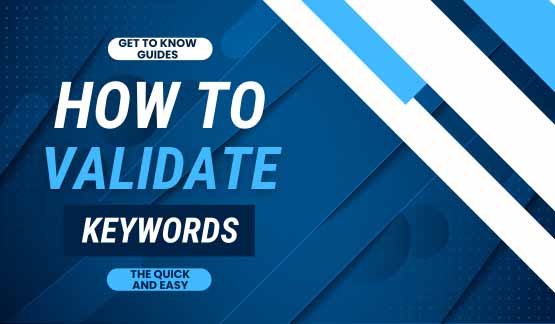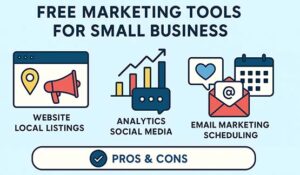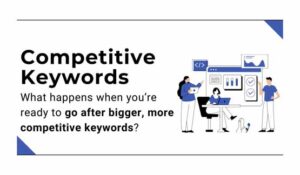Every business investing in digital marketing asks the same question:
How do I know if a keyword will actually drive conversions before committing to SEO?
We’ve all been there—spending months optimizing for a keyword, only to realize later that it doesn’t bring the right traffic, convert well, or justify the effort. It’s frustrating and costly.
The good news? You don’t have to wait months to find out. You can validate keyword performance in days using paid ad validation—a strategy that lets you test which keywords actually generate results before investing long-term in SEO.
In this post, I’ll define paid ad validation, explain how it works, and show you how to use it to refine your SEO strategy—so you can rank for keywords that actually drive business growth.
What Is Paid Ad Validation?
Paid ad validation is the process of running short, targeted PPC campaigns to test which keywords generate conversions before committing to long-term SEO efforts.
In other words:
It’s a low-risk, high-speed way to identify which keywords attract the right audience, drive meaningful engagement, and lead to real business results—before spending months optimizing for them.
The added benefit? By filtering out low-converting keywords early, you focus SEO efforts only on proven winners, increasing your chances of ranking for terms that bring real ROI.
In this post, we’ll cover:
✅ What paid ad validation means and how it’s used in PPC campaigns
✅ How to use short-term Google Ads to test keywords before investing in SEO
✅ A step-by-step process to find high-converting keywords fast
By the end, you’ll know how to eliminate guesswork from your SEO strategy, ensuring you’re spending time and resources on keywords that actually convert.
Let’s dive in.
How Paid Ad Validation Works (Step-by-Step Breakdown)
To effectively validate keywords using paid ads, you’ll need to follow a structured process. Here’s how it works:
Step 1: Choose Keywords to Test
Before running a campaign, you need a list of potential keywords to validate. These may come from:
- SEO keyword research (Google Keyword Planner, Ahrefs, SEMrush)
- Competitor analysis (Identifying keywords competitors rank for)
- Customer insights (Search queries from site analytics or FAQs)
When selecting keywords for validation, prioritize:
✅ Keywords with commercial intent (e.g., “best HVAC repair near me” vs. “how does an HVAC system work”)
✅ High search volume, but unclear conversion potential
✅ Long-tail keywords that might be easier to rank for organically
Once you have a shortlist, it’s time to test them with paid ads.
Step 2: Set Up a Small Google Ads Campaign
Now, you’ll create a targeted, short-term Google Ads campaign to gather data. Follow these key steps:
1️⃣ Use Exact Match and Phrase Match – These prevent wasted spend on irrelevant searches.
2️⃣ Set a Small Daily Budget – Start with a test budget (e.g., $10–$50 per day).
3️⃣ Create Highly Relevant Ad Copy – Ensure the ad reflects searcher intent.
4️⃣ Drive Traffic to a Targeted Landing Page – Don’t send visitors to a generic homepage; match the page to the keyword’s intent.
5️⃣ Enable Conversion Tracking – Set up Google Ads and Google Analytics to track meaningful actions like purchases, sign-ups, or calls.
Step 3: Monitor Performance (CTR, Conversions, CPC)
Once the campaign is live, monitor key performance metrics:
📌 Click-Through Rate (CTR) – Measures how compelling the ad is. Low CTR suggests the keyword may not match searcher intent.
📌 Conversion Rate – Tracks how often visitors take a desired action. High conversion = strong keyword potential.
📌 Cost-Per-Click (CPC) – Indicates competition and ad cost. A high CPC may signal strong value or excessive competition.
📌 Bounce Rate & Engagement Metrics – If users leave quickly, the keyword may be attracting the wrong audience.
Run the campaign for at least a few days to a week to collect meaningful data.
Step 4: Analyze & Apply to SEO Strategy
After gathering data, apply insights to refine your SEO strategy:
✔ High CTR + High Conversions → Prioritize for SEO (strong keyword potential)
✔ High CTR + Low Conversions → Adjust landing page or refine targeting
✔ Low CTR + High CPC → Potentially too competitive; look for variations
✔ Low Engagement Metrics → Keyword may not be a good fit for your business
By eliminating guesswork, you’ll focus SEO efforts on proven, high-converting keywords, ensuring your content ranks for terms that drive real business growth.
Common Mistakes & How to Avoid Them
🚨 Mistake #1: Not Testing Enough Keywords
If you test only a handful of keywords, you might miss opportunities. Instead, test a mix of short-tail and long-tail keywords to find hidden gems.
🚨 Mistake #2: Using Broad Match Too Soon
Broad match keywords often trigger irrelevant searches, wasting ad spend. Start with exact and phrase match, then expand if needed.
🚨 Mistake #3: Ignoring Conversion Tracking
Clicks don’t matter if they don’t convert. Set up tracking from day one to measure what really matters: sign-ups, purchases, or calls.
🚨 Mistake #4: Treating This as a One-Time Test
Keyword trends change. Re-run validation tests periodically to stay ahead of market shifts and refine your SEO strategy over time.
Best Practices for Effective Keyword Validation
🔹 Use Negative Keywords – Filter out irrelevant searches (e.g., exclude “free” if you sell premium services).
🔹 Leverage Competitor Keywords – Run ads against competitor brand terms to test potential traffic.
🔹 Look for Long-Tail Opportunities – These often have lower CPC and higher intent.
🔹 Align Landing Pages with Search Intent – Make sure each keyword leads to the right content (e.g., informational vs. transactional).
🔹 Combine Data with Organic Search Insights – Use Google Search Console data to spot organic ranking potential.
By applying these best practices, you’ll maximize ROI from paid ads while sharpening your SEO strategy.
Put Your SEO Strategy on the Fast Track
Gone are the days of waiting months to see if a keyword will pay off. With paid ad validation, you can test keywords in days, refine your SEO approach, and focus on what actually drives results—not just what looks good on paper.
Instead of guessing which keywords will convert, you’ll have real data showing which terms bring the right traffic and real business growth. That means:
✅ Less wasted effort on keywords that don’t perform
✅ Faster wins by doubling down on what works
✅ Higher ROI from SEO by targeting proven, conversion-friendly keywords
Your Next Steps: Start Validating Keywords Today
If you’re serious about building an SEO strategy that delivers results, take action now:
🚀 Step 1: Pick 5–10 keywords you want to test
🎯 Step 2: Set up a short-term Google Ads campaign
📊 Step 3: Track conversions, refine your list, and apply insights to SEO
By validating before optimizing, you’ll eliminate guesswork, reduce risk, and rank faster for keywords that matter.









